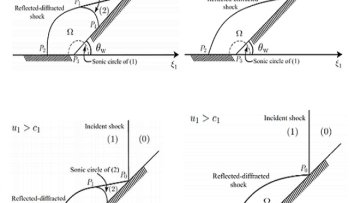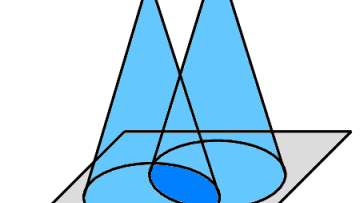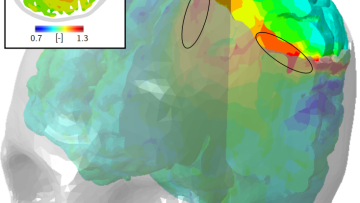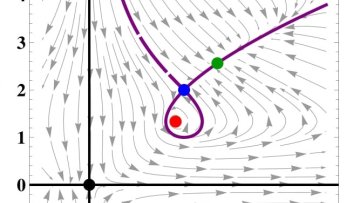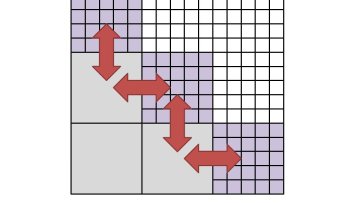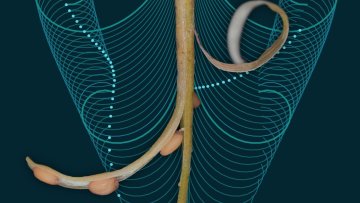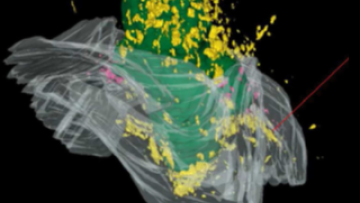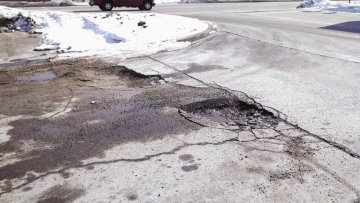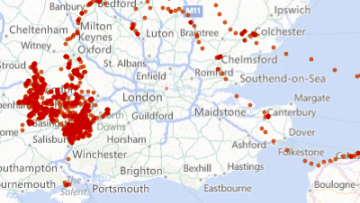This picture shows the "Z" machine at Sandia Labs in New Mexico producing, for a tiny fraction of a second, 290 TW of power - about 100 times the average electricity consumption of the entire planet. This astonishing power is used to subject metal samples to enormous pressures up to 10 million atmospheres, causing them to undergo violent plastic deformation at velocities up to 10 km/s. How should such extreme behaviour be described mathematically?
As part of our series of research articles deliberately focusing on the rigour and complexity of mathematics and its problems, Oxford Mathematician Gui-Qiang G Chen discusses his work on the Mathematics of Shock Reflection-Diffraction.
X-ray imaging is an important technique for a variety of applications including medical imaging, industrial inspection and airport security. An X-ray image shows a two-dimensional projection of a three-dimensional body. The original 3D information can be recovered if multiple images are given of the same object from different viewpoints. The process of recovering 3D information from a set of 2D X-ray projections is called Computed Tomography (CT).
Much has been written about the buy-to-let sector and its role in encouraging both high levels of leverage and increases in house prices. Now Oxford Mathematician Doyne Farmer and colleagues from the Institute for New Economic Thinking at the Oxford Martin School and the Bank of England have modelled that impact.
Many elastic structures have two possible equilibrium states. For example umbrellas that become inverted in a sudden gust of wind, nanoelectromechanical switches, origami patterns and even the hopper popper, which jumps after being turned inside-out. These systems typically move from one state to the other via a rapid ‘snap-through’. Snap-through allows plants to gradually store elastic energy, before releasing it suddenly to generate rapid motions, as in the Venus flytrap .
For over a hundred years, when confronted by swelling in the brain, surgeons more often than not have resorted to decompressive craniectomy, the traditional route to reducing swelling by removing a large part of the skull. However, while this might be the standard procedure, its failure rate has been worryingly high, primarily because the consequences on the rest of the brain have been poorly understood.
There is a wide class of problems in mathematics known as inverse problems. Rather than starting with a mathematical model and analysing its properties, mathematicians start with a set of properties and try to obtain mathematical models which display them. For example, in mathematical chemistry researchers try to construct chemical reaction systems that have certain predefined behaviours. From a mathematical point of view, this can be used to create simplified chemical systems that can be used as test problems for different mathematical fields.
Correctly predicting extinction is critical to ecology. Claim extinction too late, and you may be taking resources away from a species that actually could be saved. Claim extinction too early, and you may cause the true extinction due to stopping resources, such as removing protection of its habitat.
The motion of weights attached to a chain or string moving on a frictionless pulley is a classic problem of introductory physics used to understand the relationship between force and acceleration. In their recently published paper Oxford Mathematicians Dominic Vella and Alain Goriely and colleagues looked at the dynamics of the chain when one of the weights is removed and thus one end is pulled with constant acceleration.
How do we stop poaching? You may think the answer lies in finding a way of giving gamekeepers an advantage over poachers. Oxford Mathematician Tamsin Lee and David Roberts from the University of Kent decided to look at the interaction between rhino poachers and a gamekeeper to predict the outcome of the battle. Their conclusions suggest alternative ways of tackling the problem.
Plants use many strategies to disperse their seeds, but among the most fascinating are exploding seed pods. Scientists had assumed that the energy to power these explosions was generated through the seed pods deforming as they dried out, but in the case of ‘popping cress’ (Cardamine hirsuta) this turns out not to be so. These seed pods don’t wait to dry before they explode.
Frost heave is a common problem in any country where the temperature drops below 0 degrees Celsius. It’s most commonly known as the cause of potholes that form in roads during winter, costing billions of dollars worth of damage worldwide each year. However, despite this, it is still not well understood. For example, the commonly accepted explanation of how it occurs is that water expands as it freezes, and this expansion tears open the surrounding material.
The chameleon's tongue is said to unravel at the sort of speed that would see a car go from 0-60 mph in one hundredth of a second – and it can extend up to 2.5 body lengths when catching insects. Oxford Mathematicans Derek Moulton and Alain Goriely have built a mathematical model to explain its secrets.
The use of mathematical models to describe the motion of a variety of biological organisms has been the subject of much research interest for several decades. If we are able to predict the future locations of bacteria, cells or animals, and then we subsequently observe differences between the predictions and the experiments, we would have grounds to suggest that the local environment has changed, either on a chemical or protein scale, or on a larger scale, e.g.




